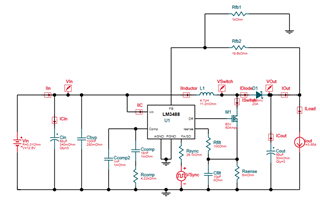Other Parts Discussed in Thread: TAS5414
Hello,
I use LM3488 as a boost converter from a car battery to 26V/3.53A output. It supplies TAS5414 audio amplifier. Its total input capacitance is 177.4uF and on the output 246uF. At the moment I am supplying it from a lab power supply which has about 0.3 Ohm resistance (inc. cables). Target appliance will have 3 meter long supply cables of AWG14.
The issue is as follows: when the power amp is disabled (default) LM3488 boost converter works with almost no load, but when it tops-up output el-caps' charge it draws current as high as 12A which causes input voltage to drop below level at which the power amp UV threshold.
I would like to limit this current. Preferably below 5A. What would you recommend?

regards
Przemysław

